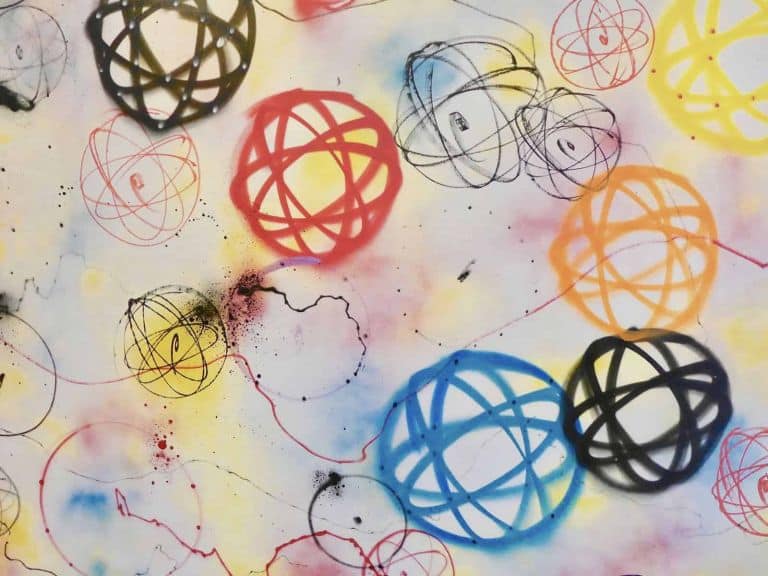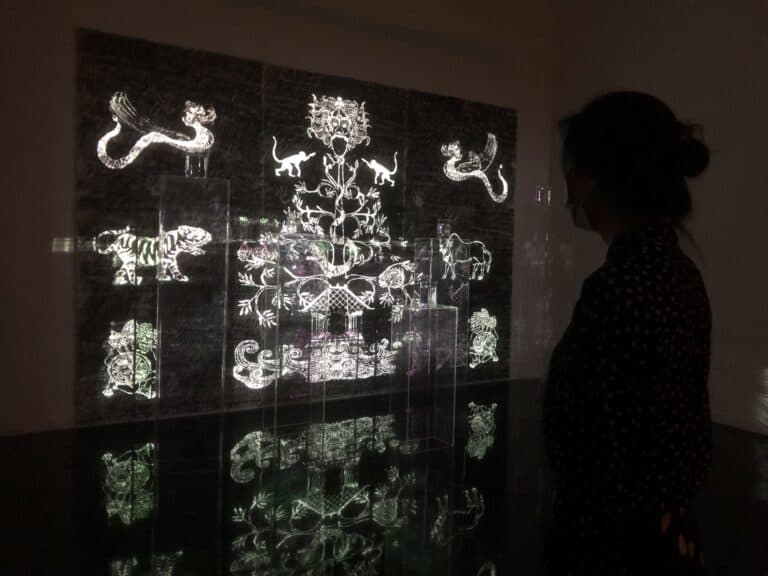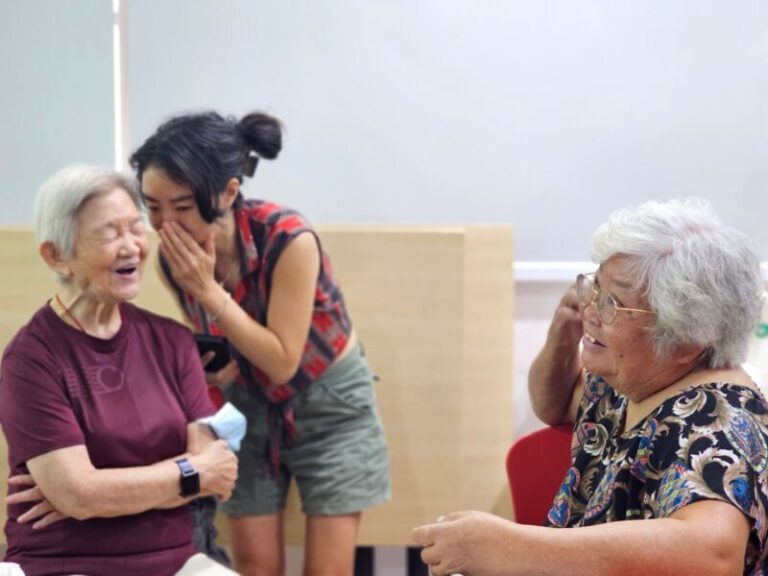It is a busy day at art fair ART SG when I swing over to the VIP lounge to meet property developer, art patron and founder of the Sunpride Foundation, Patrick Sun. Sunpride is an Asia-based non-profit which “engages in artistic dialogues with various entities and prides itself as a voice for the LGBTQ+ community.”
It’s the organizer of the critically acclaimed Spectrosynthesis exhibitions, now taking place in its third iteration in Hong Kong. Having personally seen the visually stunning Spectrosynthesis II – Exposure of Tolerance: LGBTQ in Bangkok pre-Covid, I am expecting a larger-than-life personality, full of all the artistic bells and whistles one normally associates with high-profile art collectors.
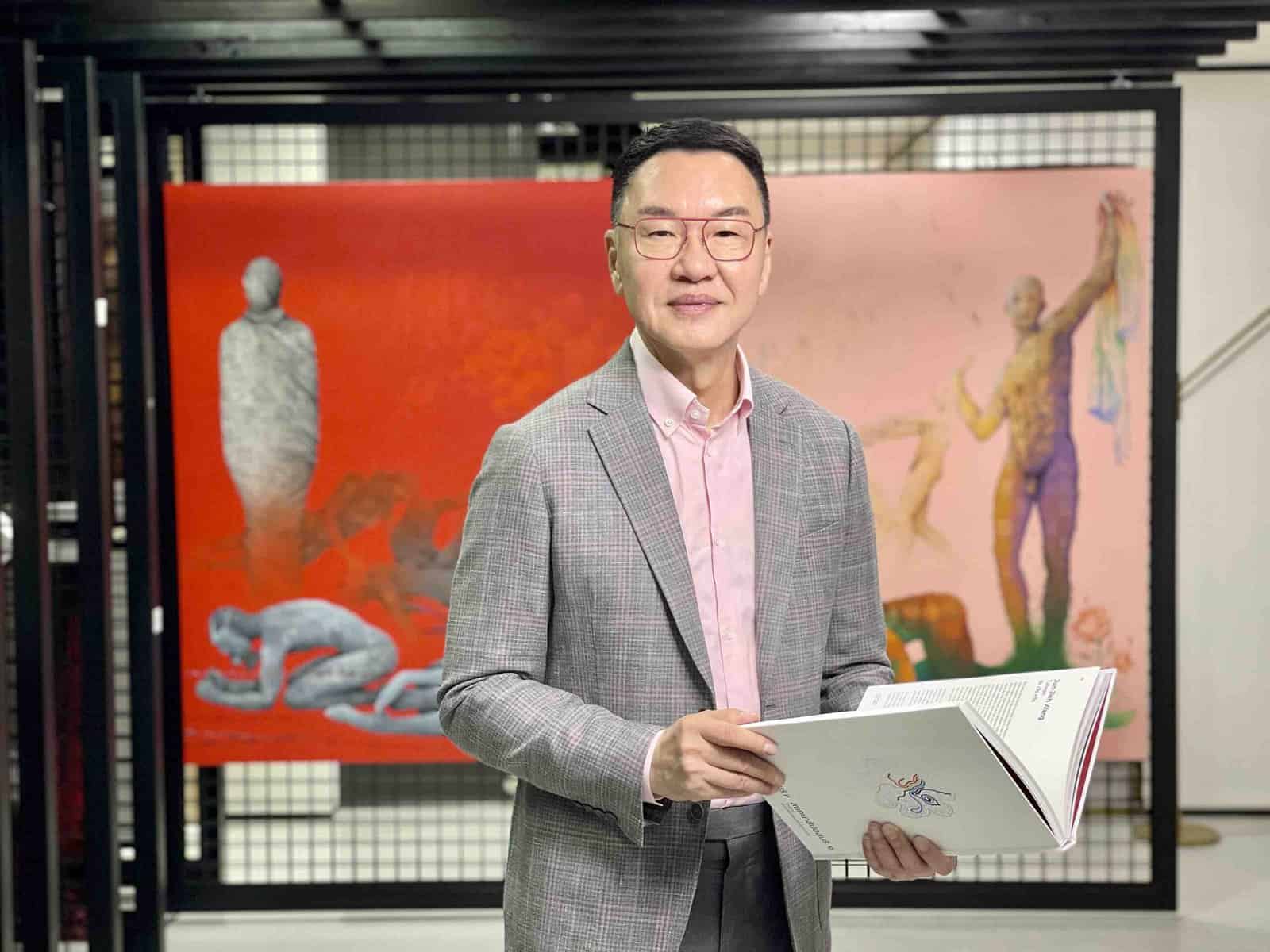
Sun is welcoming with his friendly, charming hellos, but certainly presents more as a distinguished corporate businessman than a stereotypically flamboyant art personality. We’re here to have a chat about his work with Sunpride and what was initially framed as a short meet and greet, quickly blooms into a full-blown interview. While his public relations representatives have worked hard to pin down a story, with many emails behind the scenes on the vetting of potential questions, Sun appears far more chilled in person.
We dive right into it and I am curious to understand more about Sunpride. As its website explains, “the name ‘SUNPRIDE’ comes from the desire to promote equality for all human beings, including the LGBTQ+ community. The Sun is a universal source of life nurturing all living things on Earth, while Pride is synonymous with humanity’s striving towards a more equitable and harmonious future.”
It’s also, of course, Patrick Sun’s surname, which makes for a nice confluence of corporate branding and personal identity. Sunpride’s latest show Myth Makers – Spectrosynthesis III in Tai Kwun Contemporary Art features some stunning works by well-known Hong Kong artists such as Samson Young and Ellen Pau:
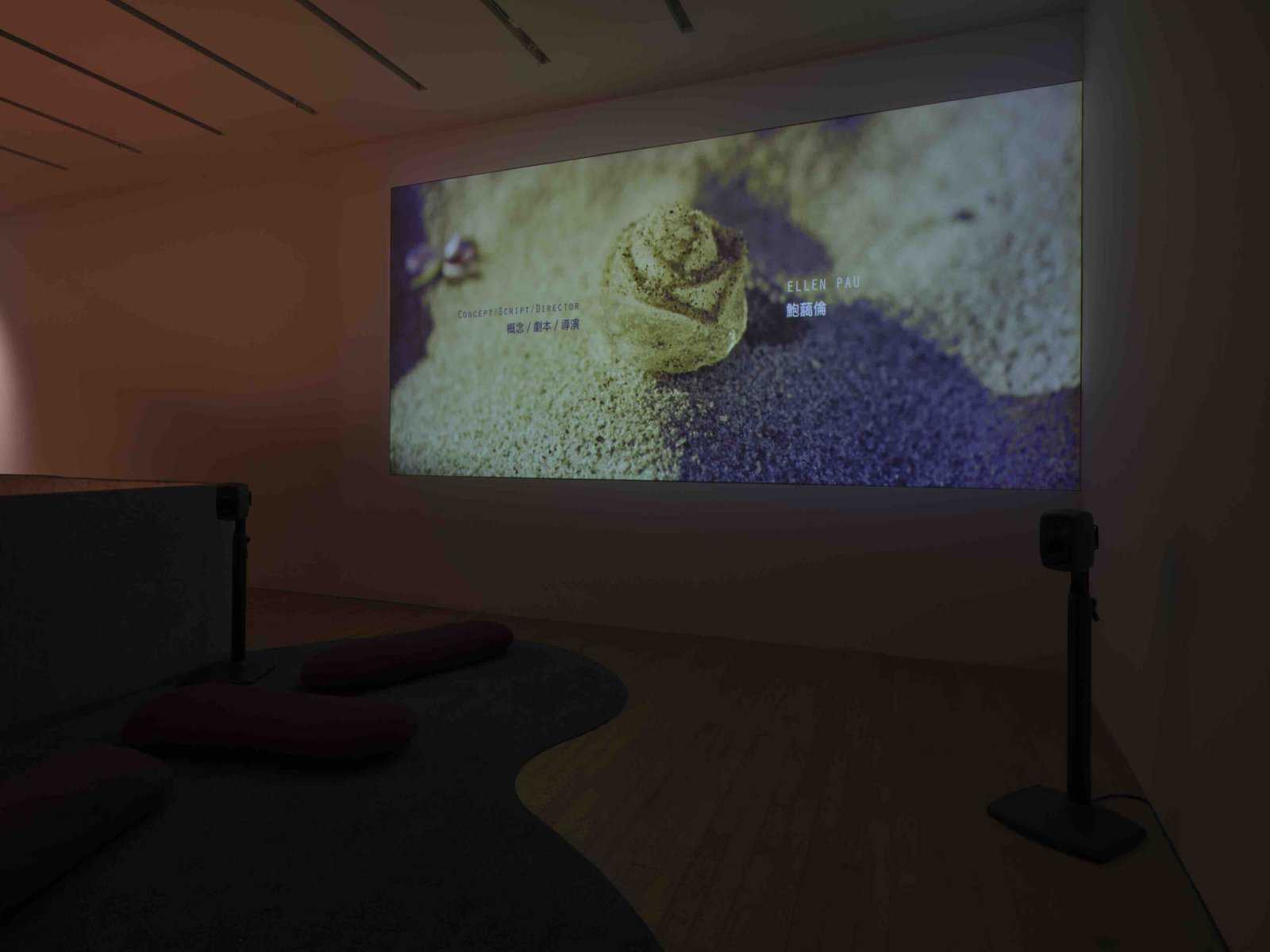
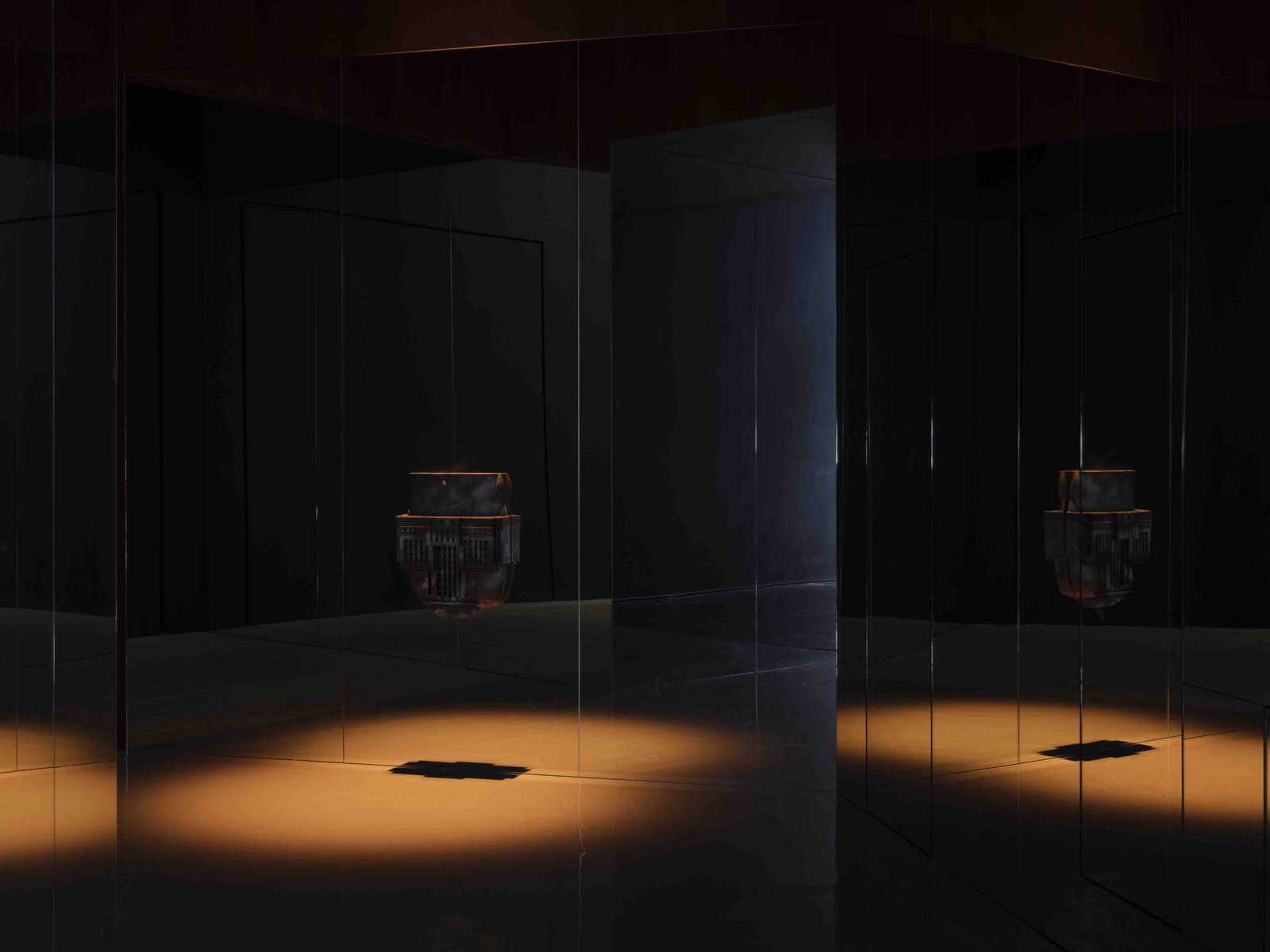
Southeast Asian artists feature strongly as well in Myth Makers, with two works by Malaysian artist Patrick Ng Kah Onn on loan from the National Gallery Singapore, including the well-known painting Self-Portrait:
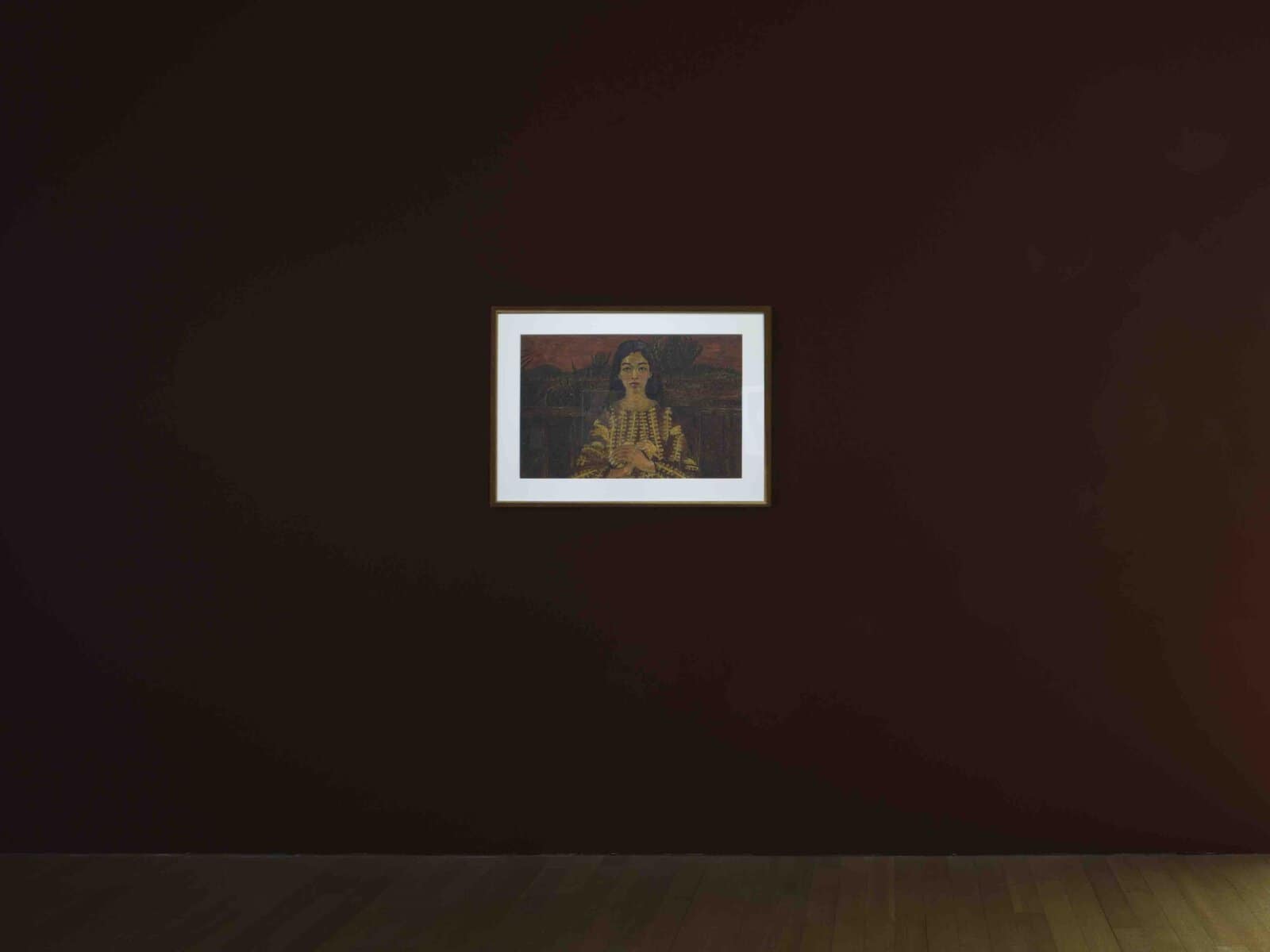
The Collector’s Role in Exhibition-Making
The Spectrosynthesis shows have been much-lauded and I am curious as to how much of its curatorial direction can be personally attributed to Sun. I ask him about the extent of his curatorial involvement and he’s candid in his response. He says, “I’m quite proud to say that I try my best not to interfere with the curation or the curatorial direction. I think that’s important. Of course, we would like to know what’s going on curatorially and artistically, but ultimately, it’s a decision of the curator to pick and choose what to display.”
I push him further and ask if there have been disagreements with curators and he remains firm that there are none. He explains, “Of course, we raise our concerns—but no, these are not even concerns, really—what we do is ask questions. For example, why has a certain work been chosen? Or why has it been located in a certain place—these are healthy discussions. But it would never come to a state of disagreement because ultimately, it is the curators’ choice and I absolutely trust in them. These are professionals, and I am not trained with the same kind of background.”
“I do have a very good team, and we do discuss things from time to time. There are so many artists in the show in Hong Kong that I’m not familiar with and I am eager to learn about them, so when I conduct tours for my friends, I can at least say something intelligent,” he laughs.
Art and activism
Sunpride shows are well-known for their emphasis on LGBTQ+ issues, but Sun offers the view that the shows are not so much in the nature of ‘activist art’ as they are a platform for learning and discovery. He says, “what we do advocates for a better environment for gay people, but I see art as a more non-confrontational and harmonious way of approaching the public. Art has a quiet way of making people understand things for themselves.”
It is also particularly important to Sun that his exhibitions are presented in public museums. “Somehow, because the shows are in public museums, visitors feel that the issues are things that they need to learn about. Even if they won’t ultimately accept the ideas put forward, they feel that they should at least find out more about them,” he explains.
I ask Sun if he has ever found interesting collaborations with private museums. While laughingly insisting that he’s not gloating because he’s simply responding to a question asked, Sun shares with me the fact that he has turned down invitations from art institutions in the United States and the United Kingdom because it is important to him to focus on bringing his exhibitions to public institutions located in Asia.
“Public institutions are important, as you will see young parents just walking in with their children, or students coming in to see the show as part of their monthly art visits. And that’s how we approach the general public. If we open the show in a private gallery, we will have all our friends there, but what we want to do is reach beyond our friendly circles or echo chambers,” he explains.
It has not been an easy road, bringing forth shows that address LGBTQ+ -related themes in relatively conservative Asian societies, and Sun is frank about the difficulties.
He tells us:
“The job has been relatively easy ever since we opened up our first show in Taipei. [But] if you talk about challenges, with our first show, the biggest challenge was to break away from the general perception of fear about the show. When we think about gay art, the immediate perception is that it’s about homo-erotica, sex and nudity, and we’ve tried to break away from that perception in order to talk about issues. We want to communicate that in many ways, homosexuals are no different from other people. We share the same feelings about loneliness, age, discrimination and stigmatisation.”
This sensitive approach in exhibition-making is also underscored in Sun’s admiration for curator Claire Barlow who worked on the Queer British Art exhibition at the Tate Britain. When asked about whether Sunpride curators consult with members of the LGBTQ+ communities in the countries where its exhibitions are held, he cites Barlow’s advice:
“Claire told me that she spent a lot of time not just curating, but also talking to various LGBTQ+ groups, because you need to understand the community and make sure you open a channel of communication, so that you don’t ignore or overlook anybody. We all have different needs. Even if you cannot answer what everyone wants through your show, you should at least acknowledge what they want to say. And that openness ultimately wins a lot of goodwill.”
Money, money, money
It is no secret that Sunpride is self-funded, although the Spectrosynthesis shows are jointly bankrolled by Sun and his local museum partners. I ask him whether it is important to retain this particular characteristic of the foundation and again, he offers a refreshingly candid viewpoint, “It’s just easier that way. We have a very small and compact team and we can make quick decisions over Zoom or in person. I have friends who have foundations with board members and they have a lot of meetings. You end up spending a lot of time doing the non-fun part of things, whereas, for us, we can still travel, see art and go to parties!”
While his approach has its clear merits, I wonder if the lack of a board hinders the development of diversity in Sunpride. Sun disagrees with me, saying that “the fact that we do our shows in different cities with different curators and trade partners, helps to bring in different perspectives.”
He explains further, “And as we’d talked about at the very beginning of this conversation, we try not to interfere with the operators’ decisions. It’s up to them to decide. And hopefully that itself brings in diversity. [You don’t necessarily need a full board to ensure diversity], and even then, with a board, it’s usually the one who speaks loudest, who gets their way!”
Championing the arts & heralding change
I ask Sun if he has approached the National Gallery Singapore and he answers with a gentle deflection.
“Oh, we always talk to people,” he laughs, “I certainly hope to bring [a Sunpride show] to Singapore, but I must qualify what I say, because while we approach institutions, it is ultimately for them to decide whether or not to take us.”
He does not hesitate however to champion two Singapore artists who he counts as personal friends and whose works are presently being shown in Myth Makers—Khairullah Rahim and Loo Zihan.
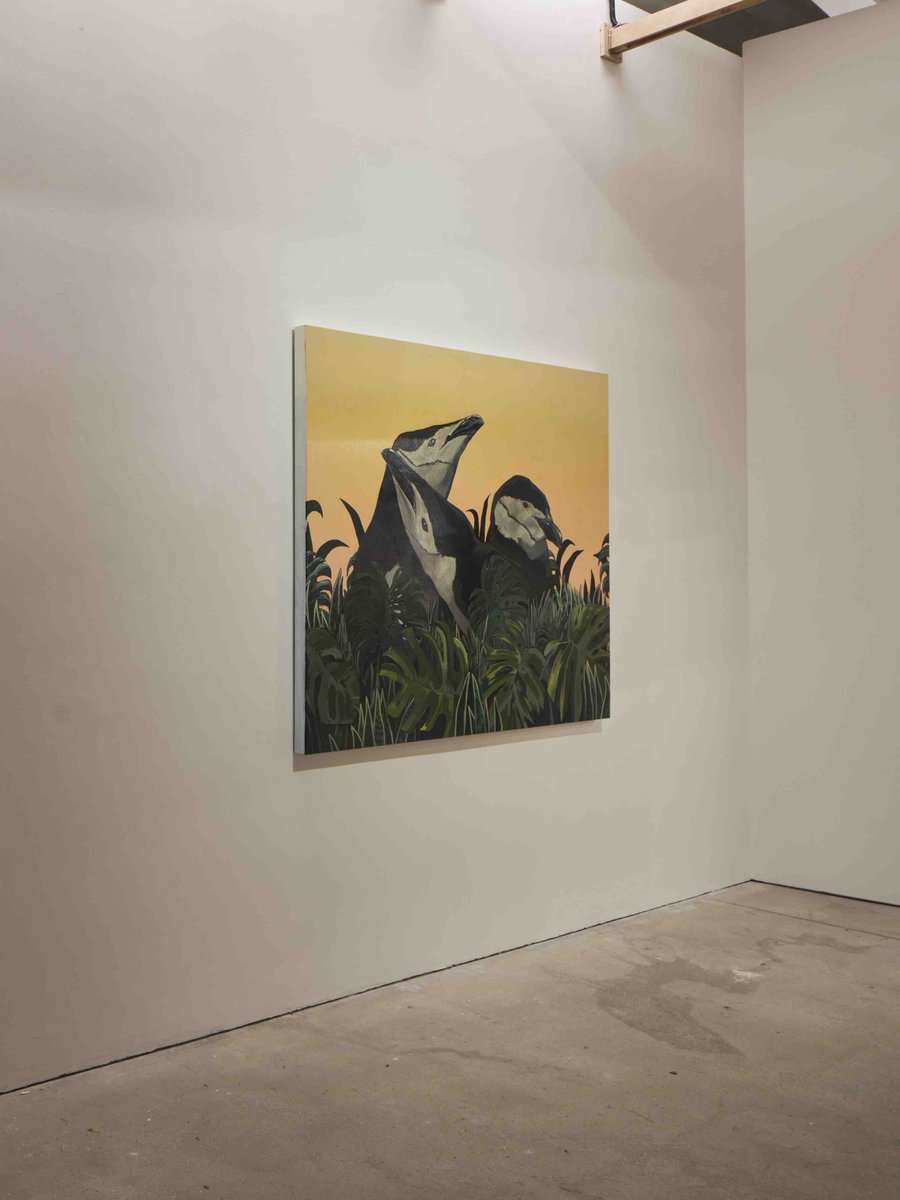
Sun’s also passionate about drawing visitors back to his home turf, Hong Kong.
He says, “People ask me out of genuine concern [about what the situation is like in Hong Kong]. They miss Hong Kong and I don’t know how to start explaining, so I just say, ‘Why don’t you just come?'”
“The borders have opened and we have lifted the Covid rules. If you worry about freedom of expression there’s really nothing to worry about. The fact that we have a show on, [featuring] this kind of challenging theme right now, speaks volumes about the situation.”
One of my final questions to Sun is whether or not the world has actually changed as a result of his exhibitions. Is it even possible for art to change the world?
In his typically sanguine fashion, he replies, “I think the art world certainly has [changed], as we have seen more art shows featuring LGBTQ+ themes, organized even by galleries. Apparently, there’s a market for it! And I believe the reason I was invited to join the Tate, Guggenheim and M+, is because of my speciality in this field. I think the institutions also feel an obligation to present a more balanced view now. Just as how they had to feature more Black artists, and female artists, they now also have to focus on LGBTQ+ voices—all the overlooked voices.”
As we stand up to say goodbye and close the interview, I offer my hand for a handshake only to be enveloped in a hug instead. It’s a lovely end to a lovely chat and the warmth that has suffused our entire conversation stays with me as I head back out into the chilly air-conditioning of Marina Bay Sands.
Will we ever see a Spectrosynthesis show being hosted in Singapore? I certainly hope so as Sun’s optimism and desire for equality for the LGBTQ+ community is nothing short of inspirational.
___________________________________
Myth Makers – Spectrosynthesis III is presently showing at Tai Kwun Contemporary Art, in Hong Kong till 10 April 2023.







